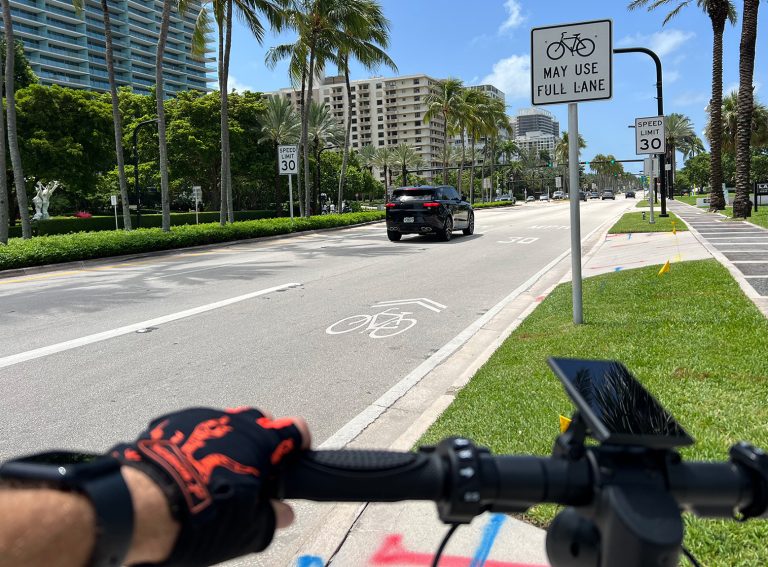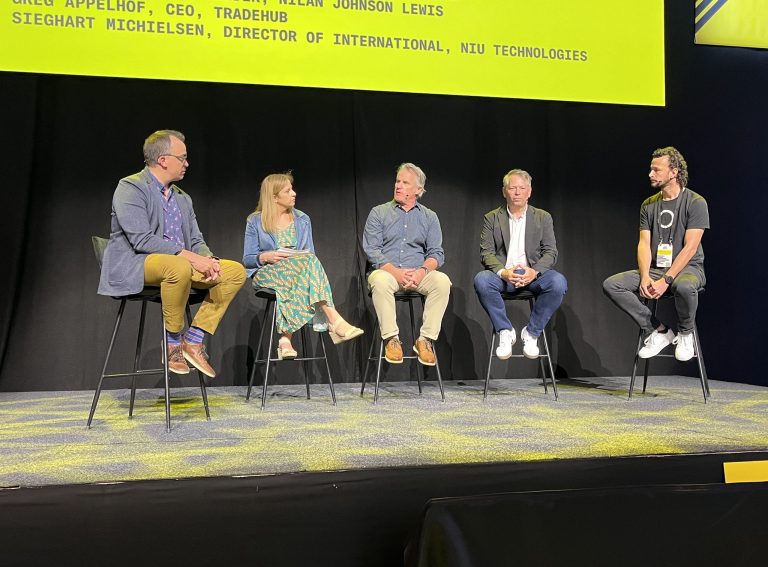Image credit: Bhavesh Patel
Authors: Dr. Richard Buning, Senior Lecturer at The University of Queensland Business School, Australia, and Dr. Wendy Pham, Postdoctoral Researcher at The University of Queensland
Micromobility transport mode share, depending on the city, typically ranges from 0 to 5% in most communities while some groups are calling for lofty goals to reach 20% to 30% of mode share by 2030. But how do we reach these goals? Providers, cities and the users/non-users must negotiate a whole range of barriers to increase acceptance and ultimately mode share.
Over the span of six weeks, our research team studied visitors, residents, users, and non-users of micromobility in Brisbane, Australia. Through on-street surveys and follow-up interviews, we gathered insights from nearly 1,000 respondents, delving into the barriers to micromobility uptake. So, why did our respondents say they wouldn’t ride an e-scooter?
“I don’t see myself as an e-scooter rider” – self-perceptions of who an e-scooter rider is
Overwhelmingly, individual self-perception emerged as a key barrier limiting ridership. Simply, most non-users did not perceive themselves as someone that would ride an e-scooter, as they considered it an option for young and able people.
Such sentiments call for broader considerations from all stakeholders about cultivating a biking and active lifestyle culture within our communities for all, as well as the imagery of marketing e-scooters, the overall public perceptions of users, representation through the media, moral panic, vehicle innovations, and generally responding to misconceptions around injuries and curbing anti-social use.
While some residents cited concerns about the hassle of commuting via bike or scooter, there was widespread enthusiasm towards building infrastructure and support systems that encourage active transportation.
“Too dangerous” – safety concerns about other reckless riders
According to both survey and interview results, safety concerns were reported as a major reason why people were hesitant to try e-scooters, with 1 in 3 survey respondents viewing e-scooters as “too dangerous”.
Users and nonusers alike are worried about potential collisions and injuries from other riders and themselves, particularly in areas mixed with heavy pedestrian and vehicle traffic. One respondent noted: “My impressions of the e-scooters are that most of them are out of control and dangerous,” after telling us she was nearly knocked down by an e-scooter.
Responding to these concerns will require a multifaceted approach requiring providers and cities to work together in curbing anti-social behaviour, stricter road rule enforcement and awareness, rider education, product innovation, and positively focused marketing and media strategies outlining safety and related benefits.
“It’s quite expensive” – casual costs and pricing misperceptions
For those that were willing to ride, many did not due to the perception of high costs in renting micromobility devices.
Many non-users found the per-minute rate too expensive for long-distance rides so did not go as far as investigating pricing options further. Those that went as far as fully exploring the shared device apps highly valued the bundled discounts of day passes and monthly packages. For tourists, the ride passes enabled them to see more and do more across all the best sites of the city at their own pace, creating long lasting memories as the “highlight of our trip”.
While e-bike subsidies are beginning to be rolled out in Australia and other countries, similar programmes for e-scooters are still lacking. Considerations for lowering micromobility costs on a wider scale will likely require a shift towards viewing it as a public service rather than a new income source for cities from operating contracts. Moving forward collaborative efforts towards lowering shared operation and personal ownership costs will lead to greater uptake.
“I don’t know how to ride them” – ease of use and accessibility
Many non-users explained they simply didn’t know how to ride and operate an e-scooter. While praised for their novelty by users, the electric design of e-scooters was tricky for novice users to get a hang of at first, especially for those with disabilities.
“Because in a way, scooters and bicycles are for able bodies,” said a participant about how users’ physical ability is often taken for granted. Product innovation and rider education campaigns will go a long way here in improving uptake amongst the wider population.
“E-scooters have boomed too quickly for infrastructure to keep up” – lack of accessible and easy-to-find separated cycling infrastructure
Brisbane’s infrastructure for micromobility is leading in Australia as the first city in the country to adopt rideshare e-scooters in 2018. Many respondents praised the green lanes and separated paths exclusively for cyclists and scooter riders running through the inner-city streets and along the Brisbane River, even calling them “the scooter highway”. The absence of dedicated lanes separated paths in locations further away from the inner city, missing connection between paths in the city, and knowing where to access and navigate the infrastructure were identified as significant obstacles to the wider acceptance and closely linked to safety concerns.
“I don’t think people understand the rules” and other minor concerns
Not knowing where to go, preference for walking shorter distances, hygiene concerns with shared devices, large group sizes, confusing sign-up processes, lack of cellular service, confusing and unknown local regulations, difficulty in finding vehicles, further contributed to reasons for not using micromobility.
To move away from car centric communities and towards vibrant active transport communities, cities must work together with micromobility providers, retailers and local advocacy groups. In Brisbane, this will be key to delivering a climate positive 2032 Olympic games.
Emails of authors: (r.buning@uq.edu.au, l.pham@business.uq.edu.au).








